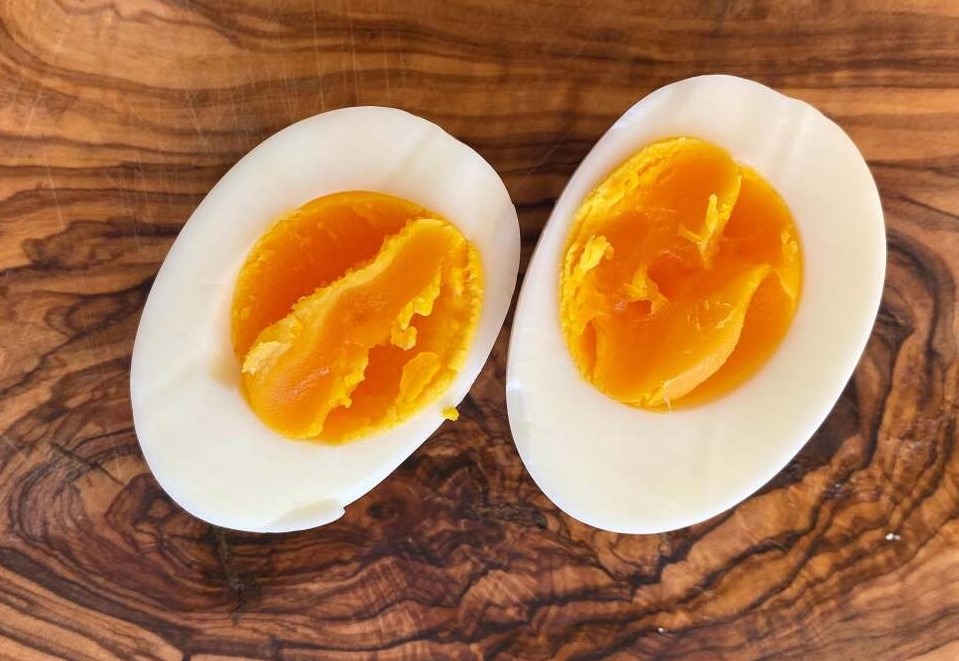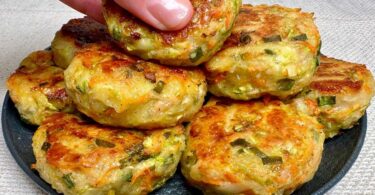Understanding the Composition of Egg Yolk
Before delving into the intricacies of yolk color, it’s essential to grasp the composition of this vital component. The yolk serves as a nutrient reservoir for the developing embryo, packed with essential vitamins, minerals, and fats necessary for growth and development. Rich in proteins, lipids, and micronutrients, the yolk is a nutritional powerhouse encased within a delicate membrane.
The Role of Carotenoids:
At the heart of the yolk’s vibrant color spectrum lie carotenoids, a class of pigments ubiquitous in nature. These organic compounds, including lutein, zeaxanthin, and beta-carotene, imbue fruits, vegetables, and egg yolks with their characteristic hues. In the case of egg yolks, carotenoids are primarily sourced from the diet of the laying hen, with factors such as foraging habits and feed composition influencing their abundance.
Nutritional Implications:
The color of the yolk offers valuable insights into its nutritional content, with deeper hues often indicating higher levels of carotenoids and other beneficial compounds. Carotenoids, renowned for their antioxidant properties, play a crucial role in promoting eye health, bolstering the immune system, and reducing the risk of chronic diseases. Yolks boasting vibrant orange hues are particularly prized for their elevated carotenoid levels, offering a potent dose of these health-enhancing compounds.
Culinary Significance:
Beyond its nutritional implications, yolk color holds profound significance in culinary circles, influencing both taste and aesthetics. Yolks with deeper hues are often associated with superior flavor and richness, imparting a luxurious mouthfeel to dishes ranging from custards to pasta. Chefs and home cooks alike value the vibrant contrast provided by orange-hued yolks, elevating the visual appeal of dishes and signaling quality to discerning diners.
The Role of Cooking Methods:
While the color of the yolk remains consistent across various cooking methods, subtle differences in texture and flavor emerge based on the degree of heat applied. Soft-boiled yolks, with their creamy consistency and slightly runny texture, are prized for their indulgent mouthfeel and delicate flavor profile. In contrast, hard-boiled yolks offer a firmer texture and more pronounced sulfurous notes, making them ideal for salads, sandwiches, and deviled eggs.
Cultural Perspectives:
Across cultures, the significance attributed to yolk color varies, reflecting unique culinary traditions and preferences. In some regions, such as Asia, deeply colored yolks are revered as a symbol of prosperity and fertility, featuring prominently in celebratory dishes and rituals. Conversely, in Western cuisines, while yolk color is valued for its aesthetic appeal and perceived nutritional benefits, it holds less cultural significance compared to other culinary elements.
The Spectrum of Boiled Egg Yolk Color: Meanings and Implications
Boiled egg yolks, with their diverse palette of colors, offer a fascinating glimpse into the world of nutrition and culinary artistry. Beyond mere aesthetics, the hue of the yolk carries profound implications for both health and gastronomy. In this exploration, we decipher the meanings behind the spectrum of boiled egg yolk colors, shedding light on their nutritional nuances and culinary significance.
1- Pale Yellow:
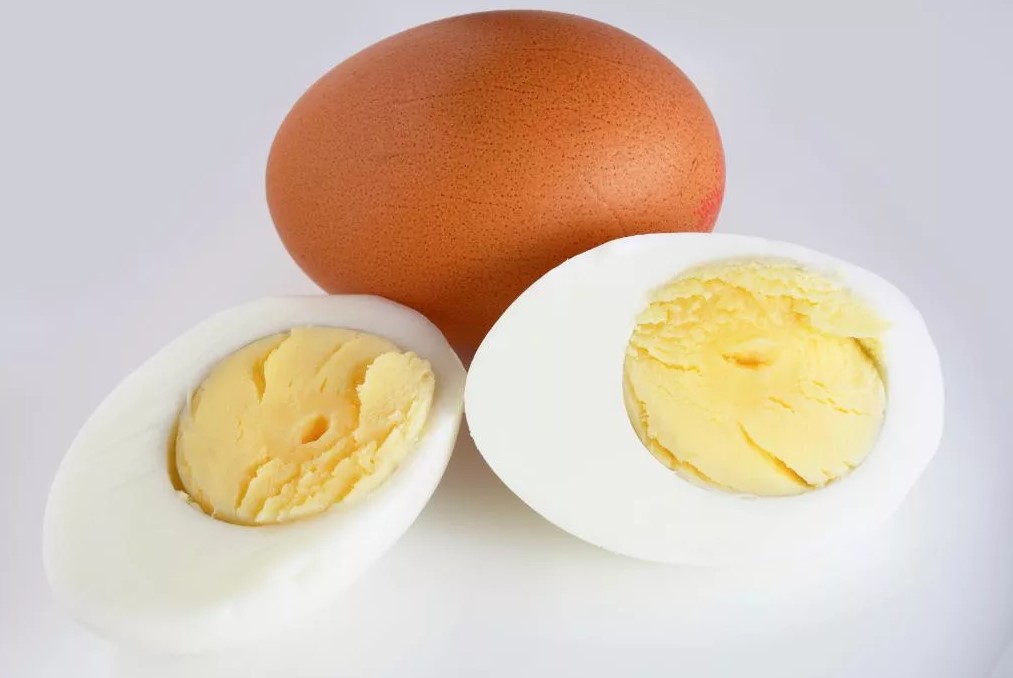
-
- Meaning: Yolks with a pale yellow hue are often associated with conventional egg production methods, where hens are typically fed a standard diet lacking in carotenoids.
- Nutritional Implications: While pale yolks still contain essential nutrients such as proteins, vitamins, and minerals, they may lack the elevated levels of carotenoids found in deeper-hued yolks.
- Culinary Significance: Pale yellow yolks tend to have a milder flavor profile and are well-suited for dishes where the yolk serves as a binding agent or garnish, such as scrambled eggs or mayonnaise.
2- Golden Yellow:
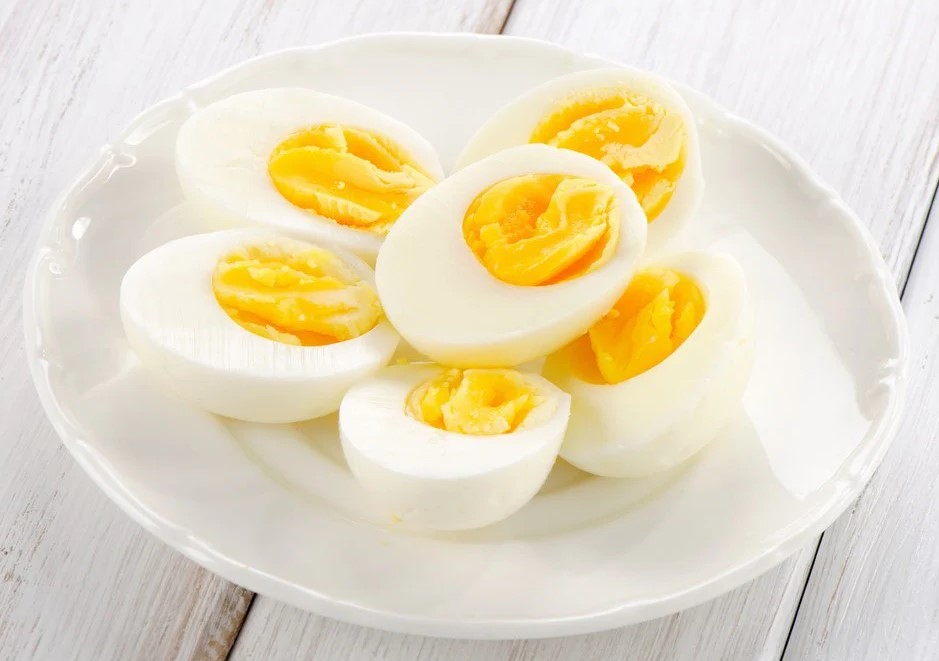
-
- Meaning: Yolks with a golden yellow hue signify a higher concentration of carotenoids, likely due to hens’ access to pasture or supplementation with carotenoid-rich feeds.
- Nutritional Implications: Golden yellow yolks boast elevated levels of carotenoids, antioxidants that contribute to eye health, immune function, and overall well-being.
- Culinary Significance: Golden yellow yolks impart a richer flavor and creamier texture to dishes, making them prized for their culinary versatility. They are ideal for recipes where the yolk serves as a prominent flavor component, such as custards, sauces, and baked goods.
3- Orange:
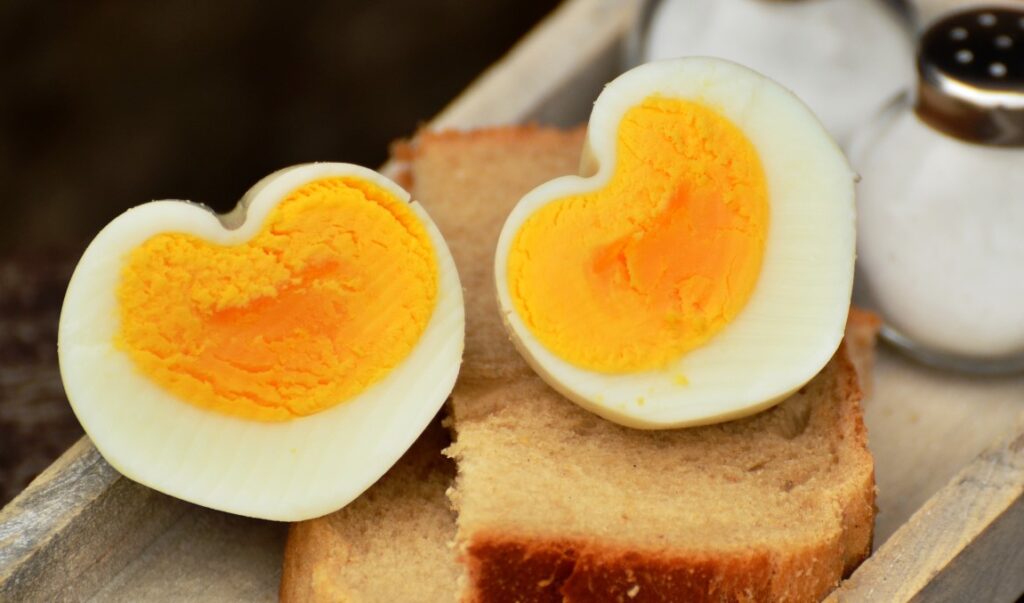
-
- Meaning: Yolks with a vibrant orange hue signify the highest concentration of carotenoids, often resulting from hens’ consumption of feed supplemented with potent sources such as marigold petals or paprika.
- Nutritional Implications: Orange yolks are prized for their robust nutritional profile, boasting elevated levels of carotenoids and other beneficial compounds that promote health and vitality.
- Culinary Significance: Orange yolks are revered for their intense flavor and luxurious mouthfeel, elevating the sensory experience of dishes ranging from pasta to omelets. Their vibrant hue adds visual appeal to culinary creations, signaling quality and freshness to discerning diners.
4- Deep Reddish-Orange:
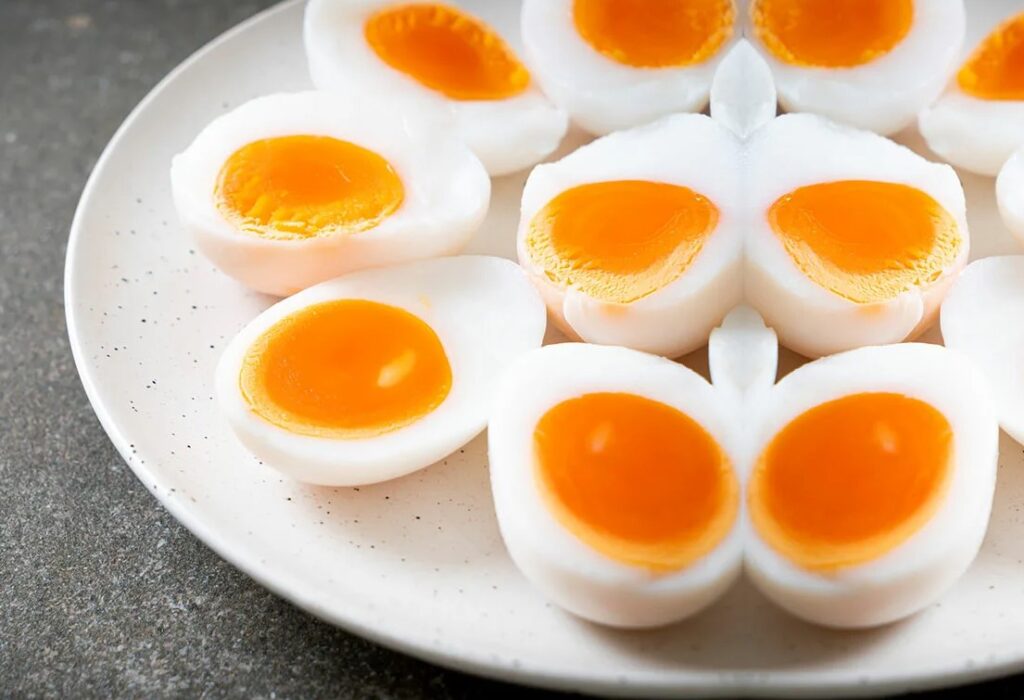
-
- Meaning: Yolks with a deep reddish-orange hue are a rare and prized find, often associated with specialty breeds of hens or unique dietary practices.
- Nutritional Implications: Deep reddish-orange yolks are indicative of exceptionally high carotenoid content, offering unparalleled nutritional benefits and antioxidant potency.
- Culinary Significance: Deep red-orange yolks are considered culinary treasures, prized for their intense flavor, velvety texture, and striking visual appeal. They are reserved for gourmet dishes where every element must shine, imparting depth and complexity to the culinary canvas.
5- White yolk:
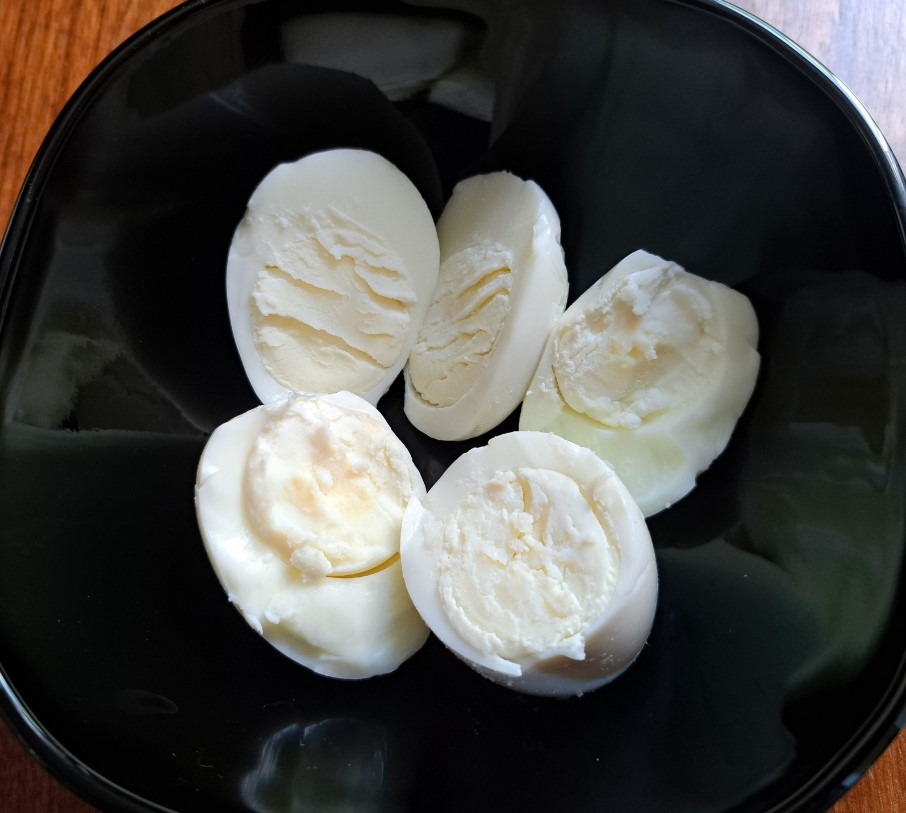
-
- Meaning: Yolks with a white coloration are highly unusual and often indicate a significant deviation from the norm in egg composition or formation.
- Possible Causes: White yolks can result from various factors, including genetic mutations, nutritional deficiencies, or abnormalities during egg formation or maturation.
- Nutritional Implications: Eggs with white yolks may have compromised nutritional content, potentially lacking essential vitamins, minerals, and proteins normally found in the yolk.
- Culinary Significance: White yolks are rare and typically not suitable for consumption, as they may indicate spoilage, contamination, or other safety concerns.
- It’s essential to discard eggs with white yolks and ensure food safety protocols are followed.
6- Grey Yolk:
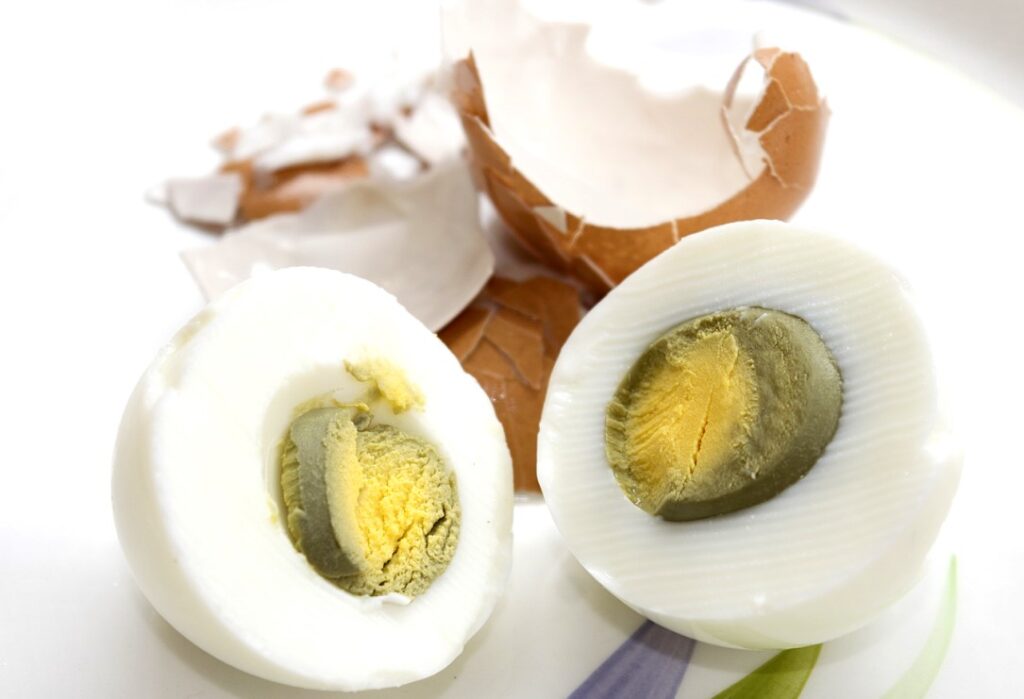
-
- Meaning: Yolks with a greyish hue are indicative of overcooking or prolonged exposure to high temperatures during the boiling process.
- Possible Causes: Grey yolks occur when iron and sulfur compounds in the egg react under heat, resulting in the formation of ferrous sulfide, which imparts a grey color.
- Nutritional Implications: Grey yolks may have altered nutritional properties due to the chemical changes induced by overcooking, but their overall nutritional content remains largely intact.
- Culinary Significance: Grey yolks are considered unappetizing and aesthetically displeasing, detracting from the visual appeal of dishes. Overcooked eggs with grey yolks may have a rubbery texture and unpleasant taste, diminishing their culinary value.
Here’s How to Fix The Green Yolks in Your Hard-Boiled Eggs
In the colorful tapestry of culinary delights, the boiled egg yolk emerges as a multifaceted protagonist, imbued with nutritional significance and culinary allure. From its humble origins within the shell to its transformation into a vibrant jewel of flavor and hue, the yolk captivates the senses and tantalizes the palate. As we unravel the mysteries of yolk color, we gain a deeper appreciation for this culinary treasure, celebrating its role as both a nourishing source of vitality and a testament to the artistry of gastronomy.



